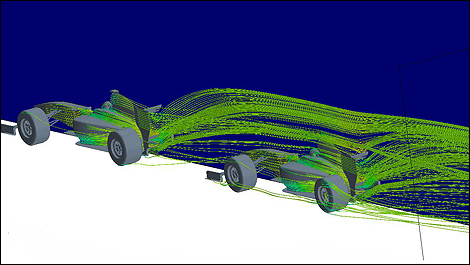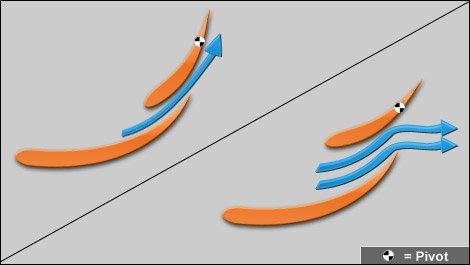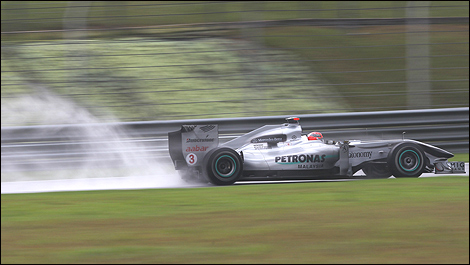MRW - Mobile Rear Wing http://spontoncristiano.wordpress.com/2 ... rear-wing/
As we know, the rookies are now in short supply in Formula 1 because when you are in the wake of a 'other car does tend to lose significant downforce at the front of the car. The car at this point becomes not only unstable but also lose much in performance.
[imghttp://spontoncristiano.files.wordpress.com/2011/01/mrw-inline11.jpg?w=470&h=265][/img]
A F1 car that moves through the air creates turbulence that are very similar to those generated by a jet moving water. These disturbances are called scie.Se think of two personal watercraft in the wake, one that follows behind greatly in lost benefits as it becomes very difficult to govern. The same concept applies to the F1 single-seaters, with the exception that the water is replaced by 'air.

The group that studies of FOTA to make the most spectacular races may have worked hard in recent years to try to find innovative solutions to make easier the overtaking in F1.
The Group had the idea to give back in some way a better performance in the slipstream of the car to equalize the deficit lost because of aerodynamic turbulence. The way chosen was to temporarily increase the engine power (thanks to KERS) and decrease the load downforce rear wing to increase the top speed.
The rear wing of an F1 car generates not only a large amount of downforce, but also an incredible amount of resistance and turbulence. Then reduce drag rear wing automatically mean increasing the speed of the vehicle. This is exactly the concept mobile wing (MRW - Mobile Rear Wing) which was introduced by the FIA Technical Regulations 2011. Increase the distance between the main element of 'rear wing and the top of the flap will result in the reduction of the resistance and deportation (see drawing). When the driver presses a button, located on the steering wheel of his car, a mechanism raises the front of the rear wing flap, called the leading edge, around a fulcrum (pivot) on the rear wing, called the edge out. This will cause the air flow is separated, thereby reducing aerodynamic drag to progress with an increase in tone with maximum speed 7-13 km / h.

The 2011 technical regulations governing the use of MRW requires that the minimum distance between the main floor and the rear wing flap is 10 mm. The motion, the tax is set by regulation, will be 50 mm, without the possibility of interim adjustments.
The MRW is activated when the driver presses a special button on his steering wheel, and winger will remain in his position of low resistance until the rider slows down. The wing will return to its original position when the pilot will have completed the overtaking maneuver.
The timing system will be vital when it must constantly calculate the gap between two cars on the track. When there will be less than a second between two cars, the delegates to the official FIA will pilot the car following MRW to activate the device and use the configuration and less aerodynamic drag (higher top speed) in order to maneuver groped overtaking. The tests and the first F1 World Championship races will be used as a test because if the pass with this system will become too easy, but the FIA change some settings to try to make it more complicated. The beauty of this system is that MRW is fully and easily adjustable. During qualifying, there will be no restriction on the use of MRW, but the pilot can use it as and when it wants. The teams will also be very careful to select the right gear ratios because the engine could be a "limited" when the driver uses the configuration at low load. To prevent this, teams, surely they will use a 7 on a plan that will exploit the low-load configuration. At the start of the race, the system will be deactivated MRW (default position) for the first two rounds. The reason for this is not to penalize too much the pilot who made the pole position, because otherwise it would be the only driver who can not use the system MRW on the first lap of the race. The MRW also be disabled for the first lap or two after a safety car period, for the same reason that the lead driver would be unfairly disadvantaged. The idea of this system seems very good. Time will tell whether the track finally overtaking in modern F1 that you can still do ...









